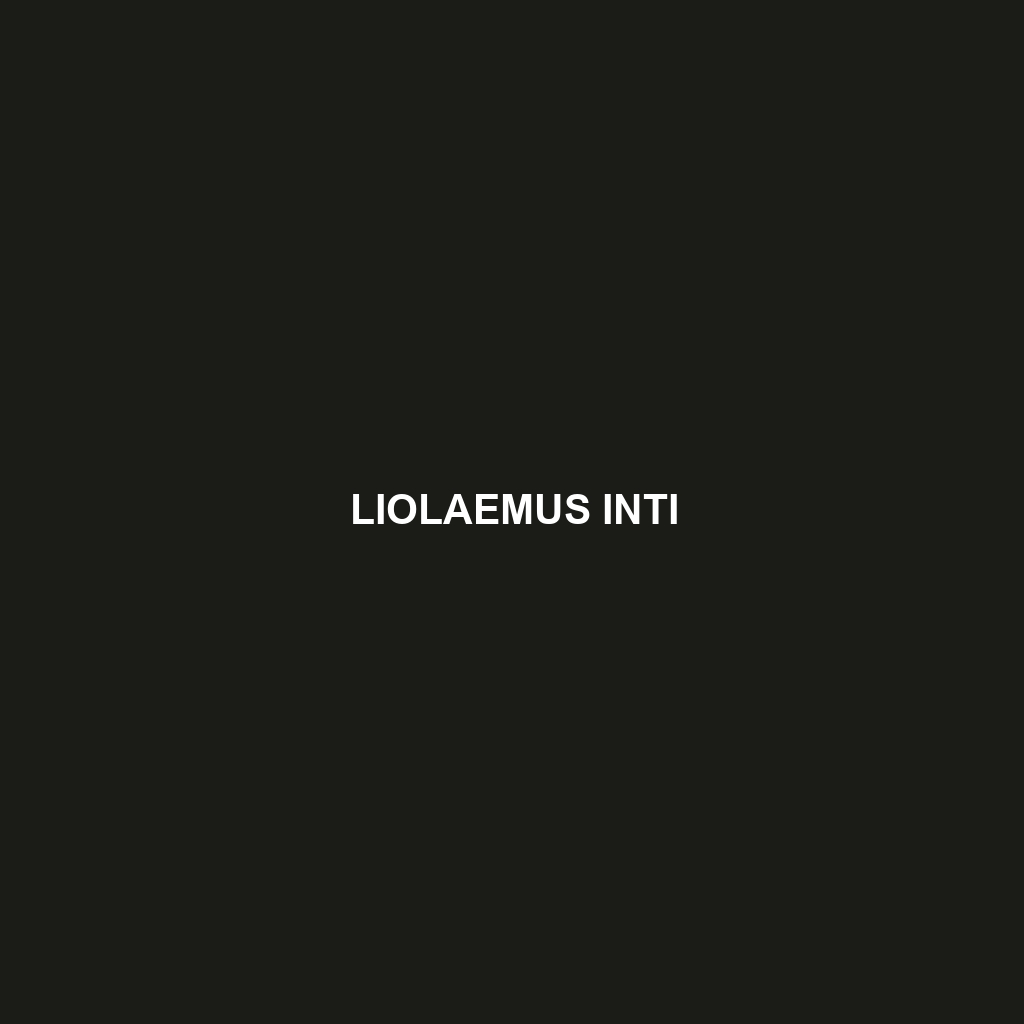-

Liolaemus kunza
The Liolaemus kunza, or Kunza lizard, is an omnivorous species native to the temperate forests and high-altitude regions of the Andes, known for its striking coloration, remarkable climbing abilities, and unique social behaviors. This robust, 5 to 8-inch lizard plays a vital role in its ecosystem through predation and pollination, while adapting to its rugged,…
-

Liolaemus kriegi
Discover the fascinating Liolaemus kriegi, a resilient lizard native to the rocky terrains of southern Chile and Argentina. With its distinctive earthy coloration and diurnal behavior, this insectivore plays a crucial role in its ecosystem while showcasing unique adaptations for survival in varied habitats.
-

Liolaemus juanortizi
Liolaemus juanortizi, a distinctive lizard from the Andes of Argentina and Chile, features a slender body measuring 15-20 cm, with brown and gray coloration for camouflage. This diurnal insectivore plays a vital role in its ecosystem as a predator of insects and contributes to ecological balance while exhibiting vibrant mating displays during the breeding season.
-

Liolaemus josei
Discover the captivating Liolaemus josei, a slender lizard native to the temperate forests and mountainous regions of Chile, characterized by its vibrant coloration and distinctive vertical stripes. This insectivorous species plays a crucial role in its ecosystem by controlling insect populations while showcasing unique behaviors such as basking in groups and climbing rocky terrains.
-

Liolaemus janequeoae
Introducing the Liolaemus janequeoae, a moderately sized lizard (15-20 cm) native to the temperate forests and scrublands of Patagonia, Argentina, known for its distinctive earthy coloration and unique behavioral displays during mating season. As an insectivore, it plays a vital role in controlling insect populations while adapting to seasonal changes in its habitat.
-

Liolaemus isabelae
Liolaemus isabelae, native to Patagonia, Argentina, is a striking lizard species measuring 13 to 17 cm with a vibrant mix of green, brown, and gray coloration, well-adapted to its diverse habitats. An insectivore with captivating social behavior, this species contributes significantly to the ecosystem by maintaining insect populations and serving as prey for larger predators.
-

Liolaemus inti
Discover the Liolaemus inti, or Inti lizard, a vibrant, omnivorous reptile native to the temperate forests and savannas of the Andean regions in Peru and Bolivia. These diurnal lizards, measuring 6 to 12 inches, play a vital role in their ecosystem by controlling insect populations and serving as prey to larger predators.
Search
Popular Posts
-
Lygosoma corpulentum
Discover the Lygosoma corpulentum, or fat skink, a robust insectivorous lizard native to Southeast Asia’s moist tropical rainforests and varying habitats. With a stocky body, impressive camouflage, and remarkable adaptability, this ovoviviparous species plays a crucial role in maintaining ecological balance.
-
Lygosoma boehmei
Lygosoma boehmei is a slender, nocturnal insectivore found in humid tropical rainforests and savannas of Southeast Asia, exhibiting a smooth, camouflaging texture and remarkable burrowing abilities. This vulnerable species plays a crucial role in its ecosystem by controlling insect populations and serving as prey for larger predators.
-
Lygosoma bampfyldei
Lygosoma bampfyldei, commonly found in tropical and subtropical regions, is a moderately sized lizard measuring 15 to 25 cm, known for its elongated body and glossy, camouflage coloration. This insectivorous species thrives in moist habitats and plays a vital role in maintaining ecological balance by controlling insect populations.
Categories
Tags
animal adaptations (924) animal behavior (5000) animal reproduction (865) behavior (920) biodiversity (7853) conservation (1670) conservation efforts (1778) conservation status (5748) diet (2104) ecological balance (2087) ecological role (1952) ecosystem (1469) ecosystem role (2901) endangered species (2514) habitat (3280) habitat conservation (1136) Habitat Destruction (1421) habitat loss (3385) herpetology (870) insectivorous reptiles (948) IUCN Red List (1971) lizard behavior (881) lizard diet (944) lizard reproduction (1101) nocturnal animals (2754) nocturnal behavior (2592) nocturnal reptiles (1061) physical characteristics (2058) predator-prey relationships (927) reproduction (2890) reptile behavior (1037) reptile conservation (1348) reptile reproduction (1069) rodent species (1325) seed dispersal (2145) Seed Disperser (979) small mammals (1168) snake behavior (952) snake diet (1061) snake reproduction (1129) tropical forests (948) Vulnerable Species (4926) wildlife (2511) wildlife conservation (5355) wildlife protection (1008)





